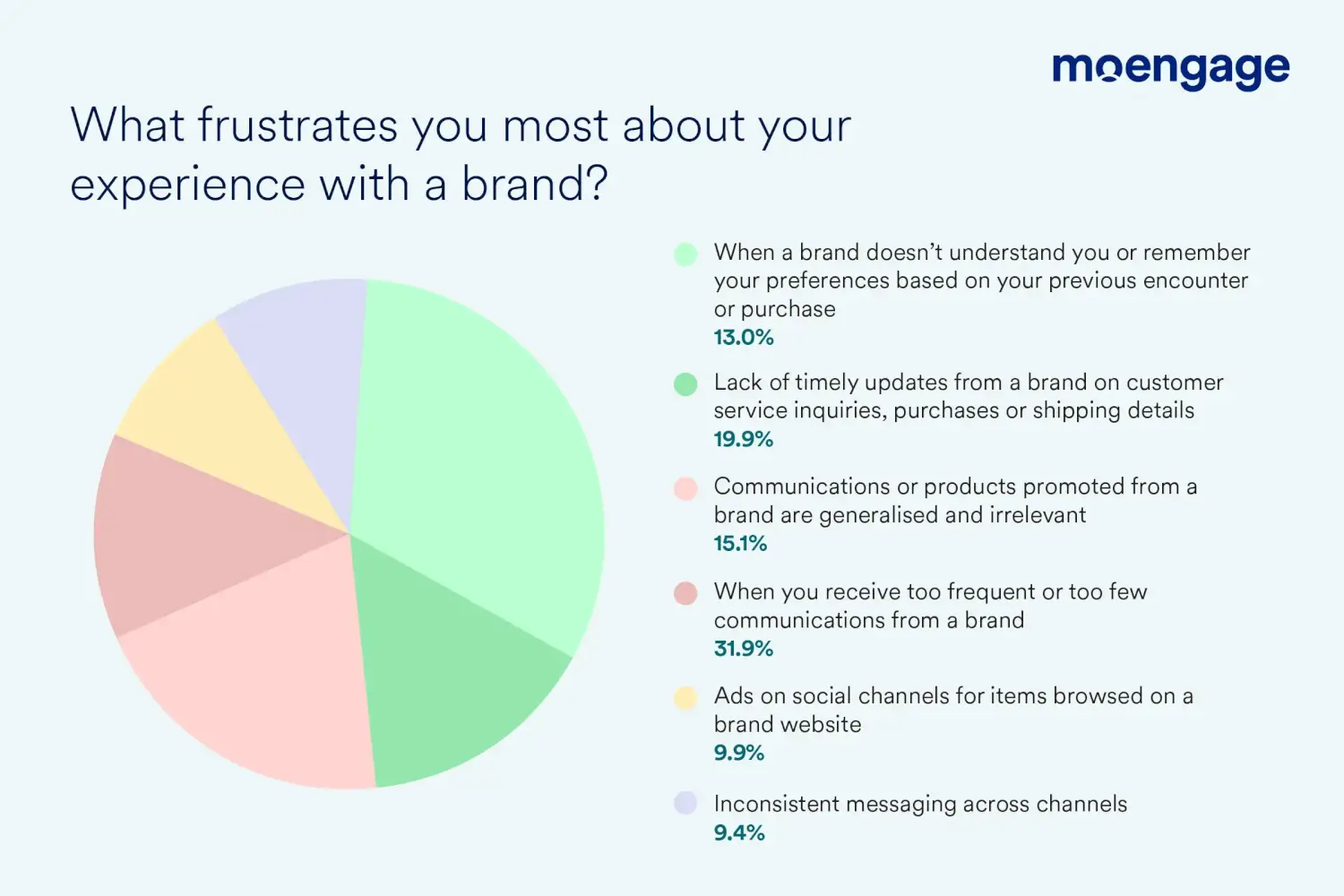Personalization Pulse Check 2023: North America


A Quick Glance at Some Key Findings
58% of consumers are frustrated with brands that offer generic and inconsistent communication.

Frequently Asked Questions
1. What is personalization and how can it be used in marketing?
Personalization is using customer data, not just name and location but also search history, product preferences, purchase history, customer events, and more to create a more meaningful conversation. When personalization is used in marketing, it is to have a 1:1 conversation with customers, so they feel understood.
Earlier, customers were fine with brands using their names or location to engage them. However, today the world is different. Customers are more demanding, and they expect brands to create a 1:1 conversation platform so they can easily inform about their affinities and preferences, expecting that the engagement will be personalized based on this information.
2. Why is personalization important to marketers?
As customers expectations are rising regarding personalized engagement, marketers need to rise the bar as well. With no personalization, marketers risk losing new customers and existing ones.
Hyper-personalization is the need of the hour, and marketers are willing to do anything to offer it to their customers. They understand that the business RoI depends on how best they engage their customers using all the relevant data (above and beyond knowing just name and location).
3. How to add personalization to your current customer engagement strategy?
Start with focusing on deeper insights, including customers, campaigns, and journeys. Get more personal with your customer insights and look beyond that name and location. Analyze your customer journey across mobile, web, and social media, then plan your engagement accordingly. Understand when your customer is active on channels, how many channels they engage with, and what channel they use before purchasing. If all this is considered and added to your current strategy, you can offer personalized engagement.
